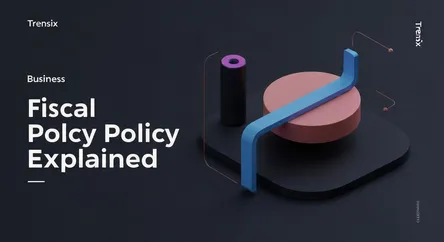Business
Fiscal Policy Explained

Discover how governments use fiscal policy—spending and taxation—to influence the economy, manage inflation, and promote stable growth.
What is it?
Fiscal policy is the use of government revenue collection (mainly taxes) and expenditure (spending) to influence a country's economy. It is the primary tool, alongside monetary policy, that governments use to manage macroeconomic variables. The main goals are to achieve stable economic growth, high employment, and price stability. There are two main types: expansionary policy, which involves increasing spending or cutting taxes to stimulate economic growth, and contractionary policy, which involves decreasing spending or raising taxes to slow down an overheating economy and combat inflation.
Why is it trending?
Fiscal policy is constantly trending due to its central role in addressing major economic events. Following the global pandemic, governments worldwide implemented massive fiscal stimulus packages to support households and businesses. Now, as many nations grapple with high inflation, there are intense debates about shifting to more contractionary policies. Discussions about national debt levels, potential tax reforms, and funding for large-scale initiatives like infrastructure and green energy also keep fiscal policy at the forefront of economic and political news.
How does it affect people?
Fiscal policy directly impacts the daily lives and financial well-being of individuals. A tax cut can increase your disposable income, leaving you with more money to spend or save. Increased government spending on public services like healthcare, education, or infrastructure can improve quality of life and create jobs. Conversely, higher taxes can reduce your spending power, while cuts in government programs can affect access to essential services. Ultimately, fiscal policy decisions can influence employment rates, the cost of living, and overall economic opportunity for everyone.